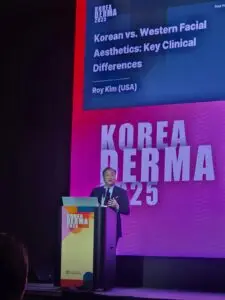In the world of cosmetic enhancements, fillers have become a popular choice for those looking to rejuvenate their appearance. Whether you’re considering fillers for the first time or seeking to enhance previous treatments, understanding the consultation process is crucial. This blog post will guide you through the essential aspects of a filler consultation, ensuring you feel informed and confident in your decision.
Introduction
The primary purpose of a filler consultation is to discuss your aesthetic goals with a qualified injector. This initial meeting is vital as it sets the foundation for achieving your desired look. During the consultation, you’ll have the opportunity to express your concerns, preferences, and expectations, allowing the practitioner to tailor the treatment plan to your unique needs.
Personalized Assessment
Every face is unique, and a personalized assessment is a key component of a successful filler consultation. The practitioner will carefully evaluate your facial features, skin type, and desired outcomes. This assessment helps in identifying the areas that can benefit most from fillers, ensuring a natural and harmonious enhancement of your features.
Types of Fillers
Understanding the different types of fillers available is essential for making an informed decision. Fillers can vary in their composition, longevity, and specific uses:
- Hyaluronic Acid Fillers: Known for their hydrating properties, these are ideal for adding volume and smoothing fine lines. These are the most popular and widely used fillers, and are extremely versatile for different anatomic areas of the face. Popular brand names in the US include Juvederm, Restylane, RHA, and more.
- Calcium Hydroxylapatite Fillers: Often used for deeper lines and enhancing facial contours. The brand name in the US is called Radiesse.
- Poly-L-lactic Acid Fillers: These stimulate collagen production and are typically used for more extensive facial rejuvenation. In the US, the brand name is Sculptra.
- Polymethylmethacrylate (PMMA) Fillers: A semi-permanent option for deeper wrinkles and folds. The brand name in the US is called BellaFill.
Each type of filler has unique properties that make it suitable for specific concerns, and your practitioner will recommend the best option based on your goals.
Procedure Details
- During the filler procedure, you can expect a relatively quick and minimally invasive process.
- After agreeing on a treatment plan, I will cleanse the treatment area and apply a topical anesthetic to minimize discomfort. After several minutes, I will wipe off the local numbing anesthetic and ice the areas. I will then cleanse the area with alcohol pads and similar products right before injecting.
- Using a fine needle or cannula, the filler is then injected into the targeted areas. I typically use a NueVibe- a vibrating tool – near the area of injection. Your body will feel the vibration as a a distraction to the actual injection, giving you less pain for your procedure.
- While some patients may experience mild discomfort, it is typically brief. Aftercare instructions will be provided to ensure optimal results and minimize any potential side effects, such as swelling or bruising.
Results and Duration
The results of filler treatments are visible immediately, with full effects becoming apparent within a few days. Depending on the type of filler used, results can last anywhere from six months to two years. It’s important to discuss the expected duration with your practitioner, as this will influence your maintenance schedule and future appointments.
Aftercare
- Ice and head elevation helps to reduce the swelling you may have, and also helps to reduce pain.
- Anti bruising medications may also help to reduce potential swelling and bruising.
- Too much or too aggressive massage is usually not recommended, since this can actually thin out the filler I have just placed.
Cost and Maintenance
The cost of filler procedures can vary based on the type of filler, the amount used, and the practitioner’s expertise. During your consultation, you will receive a detailed cost estimate and information about any necessary follow-up appointments. Regular maintenance may be required to sustain the desired results, and your practitioner will advise on the appropriate timeline for touch-ups.
Consent and Decision-Making
Informed consent is a critical aspect of the filler consultation process. I will explain the potential risks and benefits of the procedure, ensuring you have all the information needed to make an educated decision. You will also sign an informed consent to ensure that you fully understand what your procedure is, the nature of your filler, and aftercare.
I think it’s critical to feel comfortable, be educated about your procedure, and be involved in the decision-making process, as this will help achieve the best possible outcome for your treatment plan.
By understanding each step of the filler consultation, you can approach your appointment with confidence and clarity. Remember, open communication is key to achieving the aesthetic results you desire.




Recent Comments